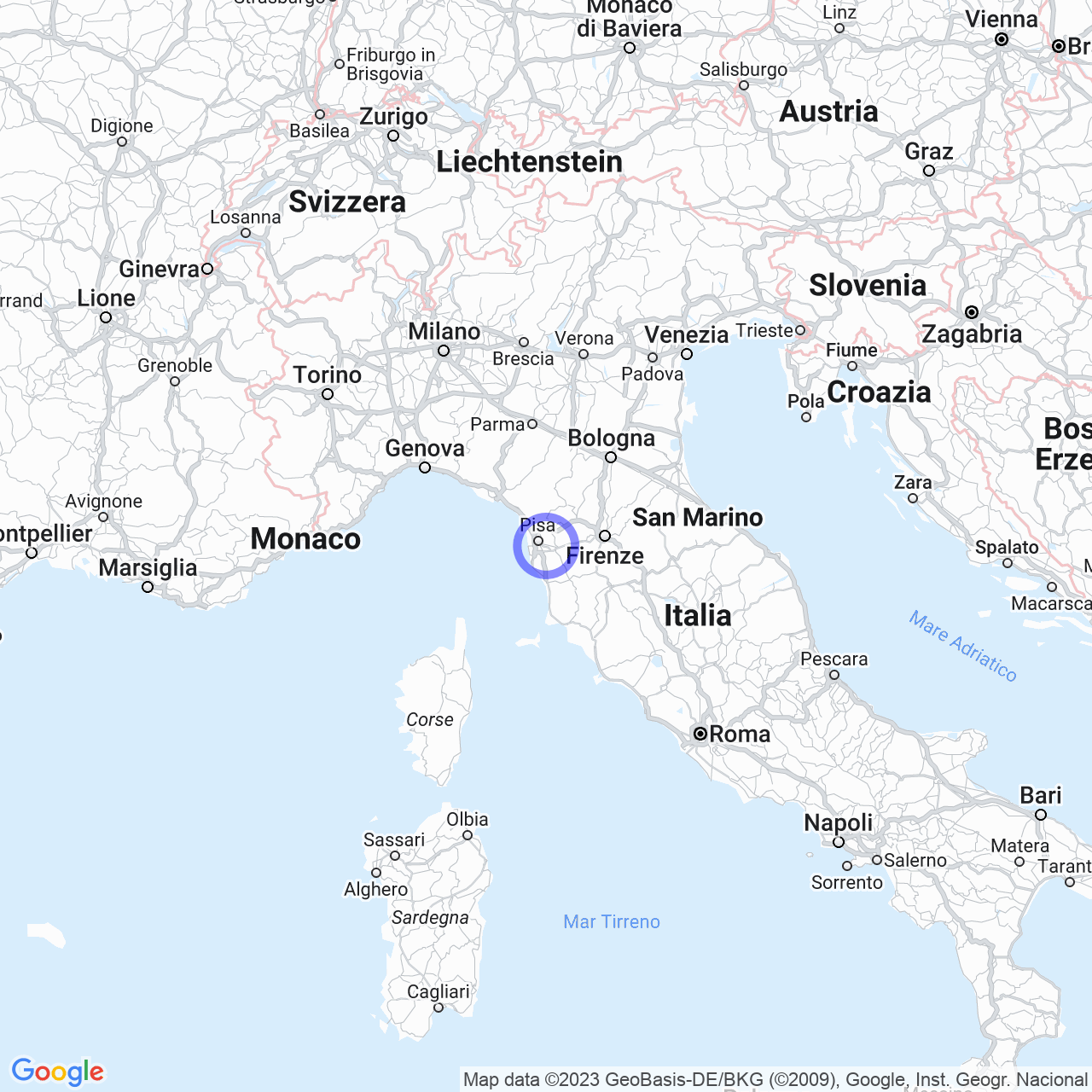Cascina
Cascina: a place with a long history
Cascina is an Italian municipality located in the province of Pisa, in Tuscany. It borders with the towns of Vicopisano and San Giuliano Terme, and it's delimited by the Arno river. This place has a long history dating back to the Roman period, and the presented territory develops in an alluvial plain on the banks of the Arno river.
Technicalities about the territory
Cascina is only 6 meters above sea level, and the territory is flat, without wooded areas or natural watercourses other than the Arno river. Cascina has a seismic classification of zone 2, which means it has a medium-high seismicity, established by the PCM ordinance of 20/03/2003. The climatic classification of Cascina is zone D with 1853 GR/G and has an average atmospheric diffusivity, established by Ibimet CNR 2002.

A historical side of Cascina
Cascina has a documented history dating back to the Roman period. The layout of the town recalls that of the ''castrum'', with a grid of streets that intersect at right angles. This design style was common for many Roman cities. Even today, we can trace the presence of the Roman centuriation in the toponyms of the surrounding villages.
The first documentation of Cascina dates back to the medieval era. In a parchment of 750, there is a reference to the donation of a house made to the church of Santa Maria di Cassina. The origin of the name is uncertain, but it could derive from a term ''casina'' or ''cassina'' in the sense of "country house," or from the homonymous stream that crossed the current town, now disappeared, which in turn would derive from an Etruscan personal name. Some speculate that in the past Cascina was the Valvata, located 8 miles reported on the Peutingeriana Table.
The struggle between the municipalities of Cascina
In the medieval period, the municipalities of Cascina fought against Lucca and Florence. In November 1313, a soldier following the Pisan condottiero Uguccione della Faggiuola, Isbrigato da Peccioli, placed a stone in the church of San Michele in Escheto in Lucca to avenge the Lucchesi who, in one of the many wars, had destroyed a tower of Cascina. The stone said, "as the Lucchesi destroyed the tower of the Cascinesi, the Cascinesi destroyed this one to the Lucchesi."
During the period of the Republic of Pisa, Cascina suffered a bloody battle. Cascina sided against Lucca and later against Florence. Cascina joined the other Tuscan cities in the resistance against the Florentine hegemony. In 1364, the Florentines unleashed a surprise attack on the walls of the municipality of Cascina, and slowly succeeded in conquering the city.
Conclusions
Cascina is a municipality with a long history. The city dates back to the Roman era, and it has developed along the banks of the Arno river. The territory is flat and does not present wooded areas or natural watercourses. Cascina is in a seismic area with medium-high seismicity and has a climatic classification of zone D. The town also has a long and colorful history that includes bloody battles and periods of conquest. Cascina continues to attract tourists from all over the world for its historical beauties, as well as for its natural beauties.
